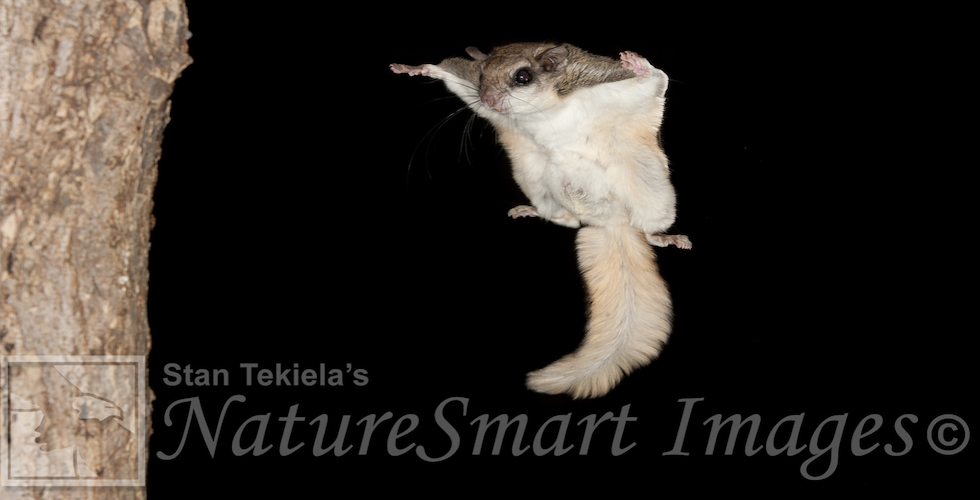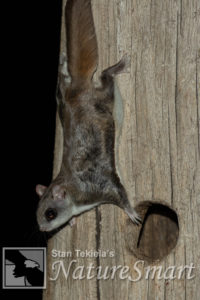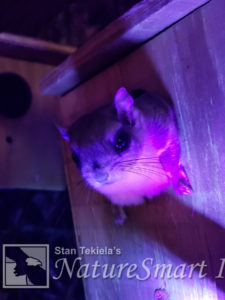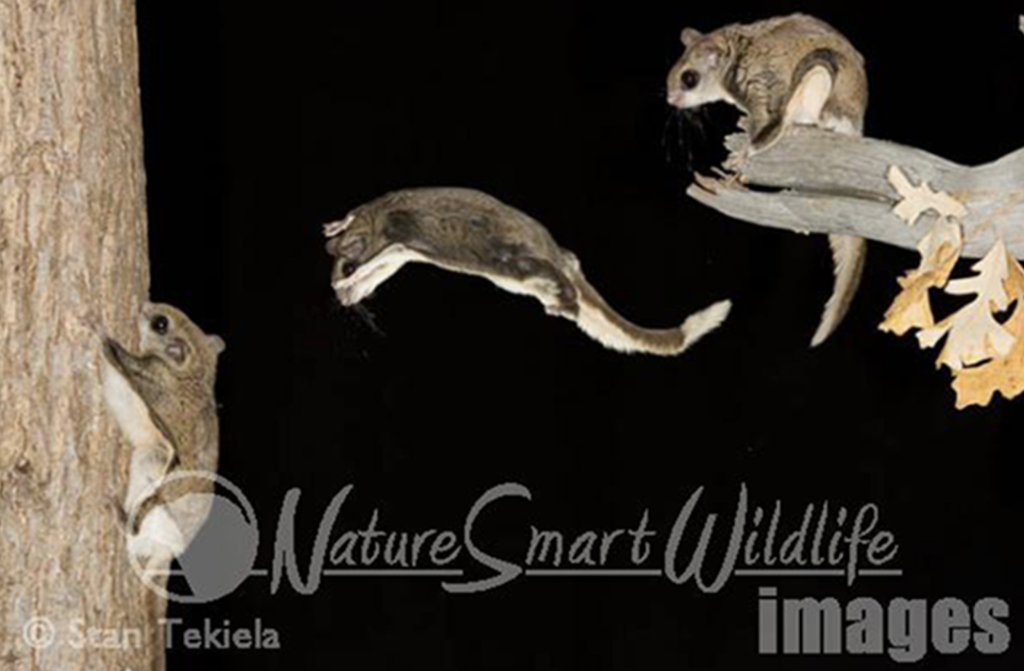
Flying Squirrels Shine Pink
 Wildlife photographer Stan Tekiela shares with us why the white bellies of Flying Squirrels shine pink under ultraviolet (UV) light.
Wildlife photographer Stan Tekiela shares with us why the white bellies of Flying Squirrels shine pink under ultraviolet (UV) light.
In this day and age, it is rare to discover a new species of animal. It is not surprising to discover new insects because there are nearly a million species of bugs in the world. On the other hand, there are only about 5,000 different kinds of critters on the planet. So, back in 2017, it was surprising when a new species of Flying Squirrel was discovered right here in North America. Well, it wasn’t exactly discovered—more like, it was separated from the existing known species.
There are 44 species of Flying Squirrel in the world. Nearly all are found in Eurasia / Southeast Asia. Here, in North America, we have just two species: the Northern Flying Squirrel and the Southern Flying Squirrel. However, along the West Coast from Central California through Oregon and Washington and up into British Columbia, the Flying Squirrels looked different from others. They were smaller and darker. So a researcher started looking into these differences, using DNA sequencing; it was discovered that this Pacific population was distinct from other flyers. And just like that, a new species was discovered. A new species hiding in plain sight. It is the 45th flying squirrel species. It was named the Humboldt’s Flying Squirrel after the German naturalist Alexander Humboldt from the late 1700s.
Flying Squirrels Shine Pink: A Stunning Discovery
 Recently, Flying Squirrels have made the news again—this time for something very different but yet again hiding in plain sight. A biologist at Northland College accidentally discovered that the white bellies of Flying Squirrels shine bright pink under ultraviolet (UV) light. This is known as fluorescing.
Recently, Flying Squirrels have made the news again—this time for something very different but yet again hiding in plain sight. A biologist at Northland College accidentally discovered that the white bellies of Flying Squirrels shine bright pink under ultraviolet (UV) light. This is known as fluorescing.
A friend of mind recently contacted me to see if I had seen this new study. I hadn’t, so I searched online. Low and behold, I read about this crazy phenomenon. At first, I thought, this is not surprising because most things that are white will glow bluish under UV light. So I had to see this for myself.
I grabbed my super cool uvBeast (UV) flashlight, which is an 18-watt flashlight with 100 LED diodes and gives off a beam of UV light. I also have a captive Flying Squirrel, so I dimmed the room lights and turned on the uvBeast. Instantly, I could see his belly glowing a bright pink. I was shocked and amazed at how bright pink he appeared in the UV light.
Why Bellies of Flying Squirrels Shine Pink
Now the question is, why do the bellies glow pink under UV light? Of course, we don’t know and right now everything will be speculation. Some are suggesting that it is for mate selection. Well, I think this theory doesn’t even start because both male and female bellies glow the same color. Some believe it helps the squirrels avoid predators. I would have no idea how this might work and find that hard to believe. The problem I have with all these guesses is that Flying Squirrels are nocturnal and become active well after sunset. There is no UV light at night, so I am not sure how the pink shining belly would help.
Flying Squirrels are amazing little animals. They are omnivorous and eat everything from fruit and seeds to leaves and flower buds, along with fungi. They are also large consumers of insects and other things such as bird eggs and baby birds.

Of course, they can’t really fly; rather, they are experts at gliding. They have a flap of skin, called a patagium, that stretches between their wrist and ankle and acts like a furry parachute. When they begin to glide, they spread their front and hind legs, forming a square shape. A small cartilaginous wrist bone, which is only found in Flying Squirrels, extends out and changes the tautness of the patagium. They also have a fuzzy, flat tail that acts like a rudder and helps with balance.
The last couple of nights, I haven taken my uvBeast (UV) flashlight outside and watched the wild Flying Squirrels at my house gliding around in the darkness. I must say, it is very strange to observe the Flying Squirrels shine pink as they glide through the jet-black sky at night. If you have any questions about getting your own uvBeast (UV) flashlight, give me a shout.
If you enjoyed Stan’s post, you may consider one of his amazing nature books: Majestic Eagles; The Lives of Wolves, Coyotes, and Foxes; or Backyard Birds: Welcomed Guests at our Gardens and Feeders. Young readers will delight in his award-winning children’s books, such as Whose Butt?, Critter Litter, and his latest, Jump, Little Wood Ducks.
You can follow Stan on Facebook and Twitter, or contact him via his web page. Stan’s nationally syndicated NatureSmart Column appears in more than 25 cities spanning 5 states (Minnesota, Wisconsin, Michigan, Illinois, and Pennsylvania) and is circulated to more than 750,000 readers.
For more stories about wildlife and nature, sign up for our newsletter now!
More posts from Stan:
Indigo Bunting—A Familiar Summer Visitor
The Nesting Behaviors of Sandhill Cranes
Big Birds, Baby Birds, Birds Everywhere
Stan Tekiela observes Marsh Wrens
The Magical, Mystical World of Sandhill Cranes


